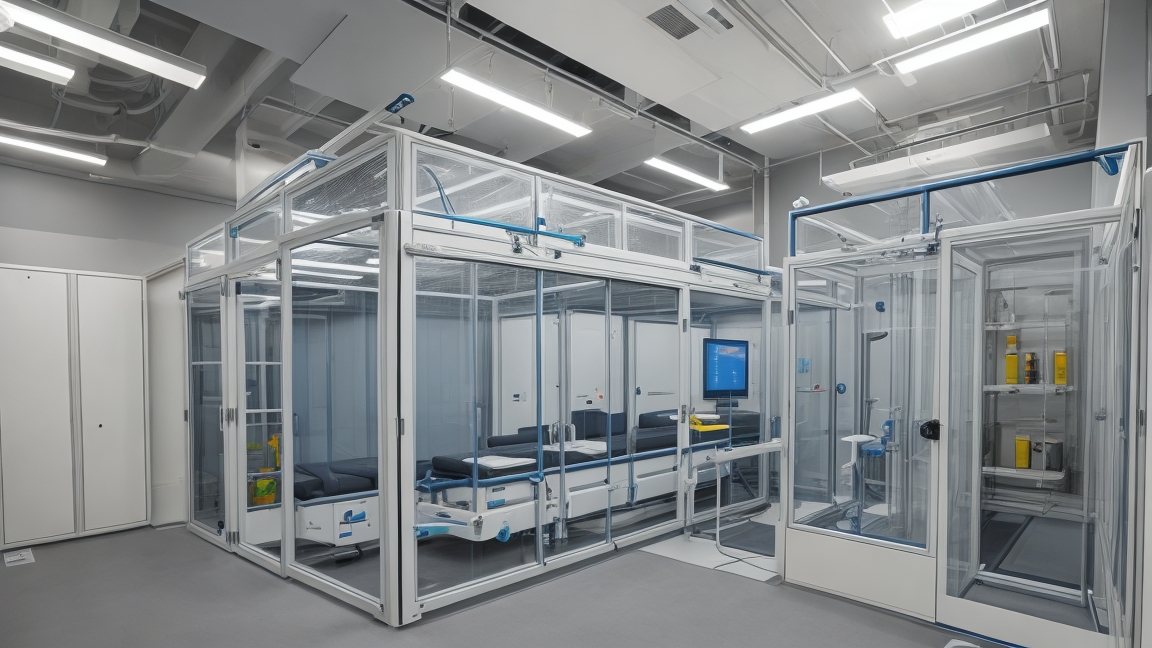In the increasingly complex world of medicine and healthcare, biosafety plays a fundamental role. Biocontainment, which can be defined as an invisible shield against the spread of dangerous pathogens, is one of the pillars upon which the protection of both patients and healthcare workers is built.

What is biocontainment? The meaning and definition
Biocontainment is a crucial practice in the realm of biological safety and healthcare. This concept encompasses a set of procedures, protocols, methods, and measures aimed at isolating and preventing the spread of pathogens such as bacteria and viruses in hospital environments and during the transport of infected patients. The essence of biocontainment is infection protection and control. The primary goal is to contain the risk of contamination and the spread of infectious diseases, aiming to minimize or entirely eliminate the possibility of transmission between patients and medical personnel.
Security levels (BSL)
Biocontainment is characterized by the stratification of security levels, ranging from basic levels (BSL-1) for low-risk infections to the highest security levels (BSL-4) for highly pathogenic agents. The definition of these levels is crucial as it determines the precautions and containment measures to be adopted based on the type of biological agent involved. This is referred to as BioSafety Level (BSL), clearly outlining safety requirements and precautions to be taken.- BioSafety Level 1 (BSL-1): This is the basic level of security applied when the risk to human health is minimal. It may involve viruses and bacteria such as canine hepatitis and Escherichia Coli. Safety measures at this level include the simple use of laboratory coats and gloves, as well as standard disinfection procedures.
- BioSafety Level 2 (BSL-2): This level is suitable for moderately risky biological agents, including diseases with difficult airborne transmission. Examples include hepatitis A, B, and C, Salmonella, measles, etc. BSL-2 safety measures include the use of protective clothing such as gowns, gloves, and safety glasses.
- BioSafety Level 3 (BSL-3): is applied in cases where the transmission or spread of potentially lethal diseases is possible, but for which there are treatments, such as MERS-CoV, SARS-CoV, and SARS-CoV-2 (Covid-19). Transportation means or BSL-3 laboratories must be carefully constructed to ensure protection from aerosols and suspended particles, specifically designed to provide external-to-internal ventilation with air filtration. It is also crucial to adhere to level 3 safety by having sealed entrances with double-door access zones.
- BioSafety Level 4 (BSL-4): This is the highest security level and pertains to extremely dangerous biological agents with a high risk of transmission, for which there are no cures or vaccines, causing potentially fatal diseases in humans. Dangerous agents include Lassa virus, Ebola, Marburg viruses, and hemorrhagic fevers like Bolivian and Argentine fever. Operators in BSL-4 laboratories wear full-body suits with positive pressure and autonomous breathing apparatus. These laboratories are built with maximum security criteria, designed to prevent any possible leakage of highly contagious pathogens. Access to such laboratories is highly restricted, and personnel are highly specialized.
How biocontainment works: negative pressure and positive pressure
Within the field of biocontainment, air pressure management plays a key role in maintaining safe and controlled environments. Two fundamental concepts associated with air pressure control are “negative pressure” and “positive pressure”.- Negative pressure: An environment with negative pressure is designed to prevent the escape of pathogens. In a negative pressure environment, air is constantly aspirated so that it cannot escape from a room or container, maintaining pressure lower than that outside.
- Positive pressure: Conversely, a positive pressure environment is designed to prevent contamination from external agents. In this case, air is constantly pushed outward, preventing the entry of external agents such as bacteria or dust. In this case, the pressure inside is higher than the external environment.
The importance of biocontainment in hospital transportation
Biocontainment is crucial in hospital transportation as it minimizes the risk of transmitting pathogens during the movement of biological samples, medical devices, or patients. This aspect is vital for preventing cross-infections, ensuring the safety of medical personnel and patients, especially those who are immunocompromised. Additionally, biocontainment preserves the integrity of precious biological samples, drugs, or organs intended for transplantation during transport, ensuring the effectiveness of treatments and therapies.Essential products
The effectiveness of biocontainment relies directly on the products and supplies used. These elements play a crucial role in infection prevention and the protection of human lives during transport and within hospital facilities.- Personal protective equipment (PPE): Devices like disposable gloves, protective masks, and gowns play a crucial role in ensuring the safety of medical personnel and healthcare workers. Disposable gloves protect against contamination during direct contact with patients or biological samples, while protective masks and gowns reduce the risk of exposure to pathogens.
- Biocontainment stretchers: Designed for the safe and isolated transport of infected patients or biological samples, these stretchers are made with durable materials, ensuring that patients remain isolated from medical personnel and other patients during transport. Our biocontainment stretchers meet BSL-4 protection standards and can be motorized to facilitate patient transport.
- Biocontainment rooms: These rooms provide a controlled environment for highly infectious patients. Equipped with advanced air pressure control systems, these chambers ensure that the air inside does not mix with the external environment. Additionally, these chambers allow medical personnel to interact with patients safely and in a controlled manner. Check Pandora, our modular isolation room
- Download PDF
